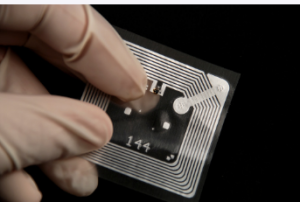An RFID reader is used to keep track of inventory, which is vital to retailers who need accurate information about their goods. The technology also helps prevent shoplifting, a problem for many businesses. These readers can also help reduce labour costs and improve accuracy.
 Improves accuracy
Improves accuracy
With the help of RFID readers technology, retailers can improve inventory accuracy. The technology enables them to track their items throughout the supply chain. It also helps them to avoid stock-counting bottlenecks and reduces labour costs. In addition, it can record quality and shipping details. Hence, it is a valuable tool for retailers to increase sales and revenue.
While implementing RFID, you must make a few operational changes. These changes will affect the entire supply chain, including your supply chain processes, store processes, and product design. The most important thing is to create a holistic, end-to-end approach. That way, you will be able to serve your customers better.
The most common application for RFID in retail is inventory tracking. A fixed RFID reader typically sits around the perimeter of a monitored area. When the RFID antenna picks up the signal from an RFID tag, it sends a digital signal to the software. However, it can also be used for other applications. For example, it can identify moving objects and alert people nearby.
Another practical application is in the case of a misplaced item. RFID can help a retailer locate a missing item quickly. Furthermore, the technology can be used to find out where the item was initially placed. The retailer can remarket the product to a new customer using this information.
A custom application can assign a specific tag to an object. It allows the user to visualise the movement of the object. Moreover, it provides the distance that the item is located.
A customised RFID readers solution will help you to maximise your retail sales. You can implement the technology in several ways, such as through a custom application or fixed RFID readers. Either way, you can expect accurate, real-time inventory updates. Therefore, you can reduce shrinkage, increase full-price sell-through, and eliminate product losses. Additionally, you can improve your supply chain efficiency, streamline your warehouse processes, and increase your profits.
An example of a customised application that can be implemented is to allow for reordering safety stock levels. So, for example, when a product is sold, the store can reorder it automatically at safety stock levels. But, before you can do that, you must ensure the item is tagged.
The accuracy of the data you get from your RFID readers is crucial to its effectiveness. You can have excess inventory, lost sales, and other problems if you have inaccurate information. You can make the right decisions about your stocks by improving the accuracy of your inventory management process.
A recent study by Auburn University’s RFID Research Center found that an RFID tag can help improve inventory accuracy. It has been determined that RFID tags can increase the level of accuracy in a store’s inventory from 65-75% to 93-99%.
Reduces labour costs
An RFID reader is a technology that allows retailers to improve inventory management by reducing labour costs. In addition, the technology provides fast and accurate scanning of items. By improving the speed and accuracy of the inventory management process, retailers can make more sales and save money.
RFID can also boost customer satisfaction. Accurate product-location information can lower inventory management costs, increase full-price sell-through and reduce theft. Additionally, real-time asset location can help retailers avoid lost assets. Using RFID to minimise shrinkage and theft can also reduce labour hours.
RFID is a more efficient method of locating items than barcodes, which can be inaccurate. In addition, while traditional inventory counts require extensive, intensive labour, RFID can reduce labour hours by up to 10 per cent. It means that workers can focus on other, more productive tasks.
In addition to lowering labour hours, RFID can reduce the risk of human error. A sound RFID system can increase accuracy by as much as 13 per cent. With increased accuracy, staff can more easily identify whether an item is in stock. Moreover, employees can better determine whether to replace or reorder a missing item.
RFID also helps retailers identify diversion points in the supply chain. For example, removing an item from a stock room or a shelf can trigger an alarm. It can also show employees where to find the item in the backroom. Having a history of the location of each item allows employees to quickly and accurately locate it.
Moreover, RFID can eliminate the need for a line of sight to scan items. For example, if an item is tagged on the floor of a store, an RFID reader can scan that tag without having to walk around the room. These readers can also scan multiple tags at once, giving you a more thorough overview of the items in your store.
Some retailers are already implementing pilot programs to test the effects of RFID. These companies are discovering that the technology can reduce labour costs and help them achieve higher levels of inventory accuracy.
RFID can also provide insights into peak shopping times. It can also give retailers insight into which items are the most desirable. If there are variations in the items on a shelf, RFID can notify employees, allowing them to change the price, restock, or pull them.